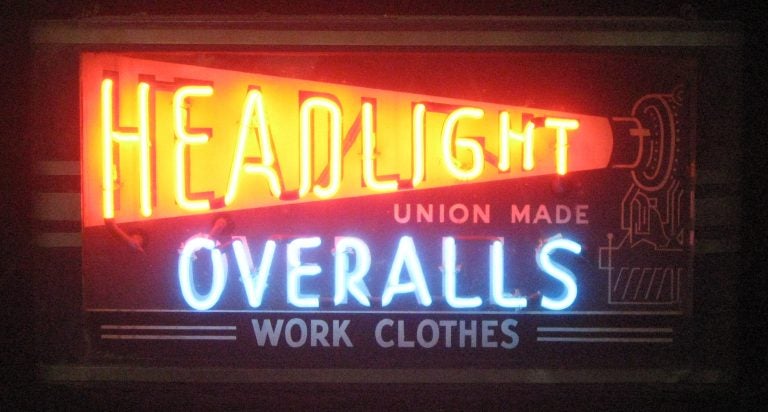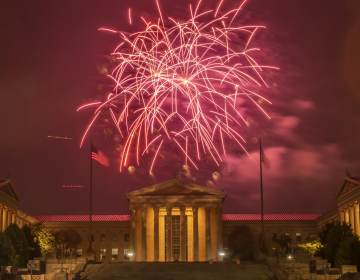The past is bright: Explore neon histories of Philadelphia, Wildwood
This summer, you can learn more about the histories of Philadelphia and Wildwood, New Jersey, through tours of their unique neon signs.

Selections from Len Davidson's collection of over 150 vintage neon signs, mostly from the Philadelphia area. He's currently trying to find a home for his Neon Museum of Philadelphia. (Credit: Len Davidson)
Neon Philadelphia
June 27, 7 to 9:30 p.m.
North 21st and Mount Vernon streets, Philadelphia
Tickets: $35
Doo Wop Back to the ‘50s Neon Night Tours
June 19 to Aug. 30, 8 p.m.
Doo Wop Experience Museum, 4500 Ocean Ave., Wildwood, New Jersey
Tickets: $13 for adults, $7 for children 12 and under
Nothing screams midcentury Americana quite like neon. Illuminated signs in an array of colors and shapes became the hallmark of American roadsides in the 1950s. They brought us animated cowboys waving drivers off the highway and motels blinking between “vacancy” and “no vacancy.”
As the heyday of neon has passed, vintage signage can provide a glimpse into days past. This summer, you can learn more about the histories of Philadelphia and Wildwood, New Jersey, through tours of their unique neon signs.
“This used to be a city full of mom and pop stores; it used a major industrial center,” says Len Davidson, of Philadelphia. He’s a neon sign designer and collector who’s trying to find a home for his 150-piece Neon Museum of Philadelphia. “When I pick up these old signs, very often the people who donate them to me tell me things about their business.”
One came from a bar in Manayunk that used to stay open most of the day to cater to millworkers on the graveyard shift. When Davidson asked the person who donated the neon sign why the bar had been called Third Base, he learned there once were three bars on that street corner.
“After people got off their shifts, they would say you gotta go to first, second, and third base before you go home,” says Davidson. “It’s just illustrative of how this was a blue-collar town filled with factories. And the neon reflects that.”
On June 27, Davidson will be offering a tour with three stops. It begins at his home studio, where some of the pieces in his collection are stored. Then it’s on to an exhibition of light-related artworks inside the apartment building Park Towne Place. The last stop will be the window display at the old Firestone Tire building on Market Street, where Drexel University has been showing a selection of Davidson’s collection. Attendees will travel between the locations by trolley, learning about Philadelphia’s history of neon and Davidson’s efforts to preserve it.
Down the Shore, nowhere is neon more iconic than in Wildwood, once known as Little Las Vegas. The seaside town is famous for its funky midcentury architecture, including plenty of classic neon. The Doo Wop Preservation League is offering bus tours by moonlight all summer long, so visitors can appreciate the signs in their original settings.
Davidson says that’s as it should be. Vintage neon signs are increasingly recognized for their historic and monetary value, “which is a good and a bad thing. It keeps them from being destroyed, but it also results in them moving around the country, away from the places they really symbolize,” he says.
A sign from the Old Original Bookbinder’s, for example, makes more sense in Philadelphia than in Tokyo or California, he says. His collection consists mainly of signs from Philadelphia and Pennsylvania.
“The pieces are examples of American craftsmanship, they’re examples of American folk art, and they’re symbols of cities,” he says.
Learn more on his tour, and follow his acquisitions — including a recent “dancing Elvis sign” — on Twitter.
This article is part of a new effort recommending things to do in the Philly region. Tell us what you think.
WHYY is your source for fact-based, in-depth journalism and information. As a nonprofit organization, we rely on financial support from readers like you. Please give today.





